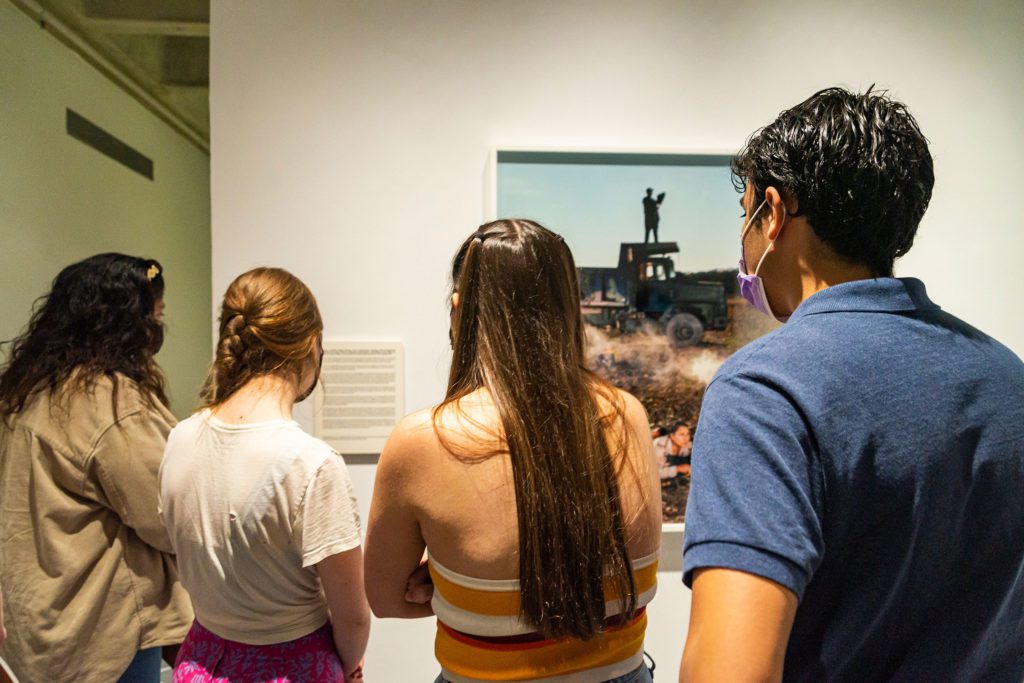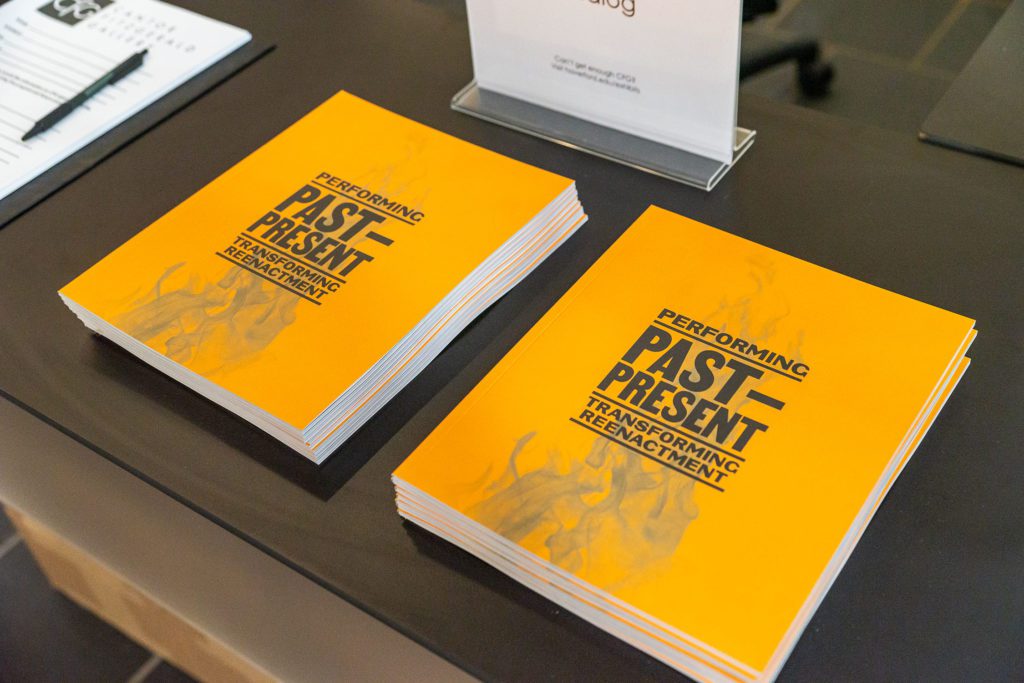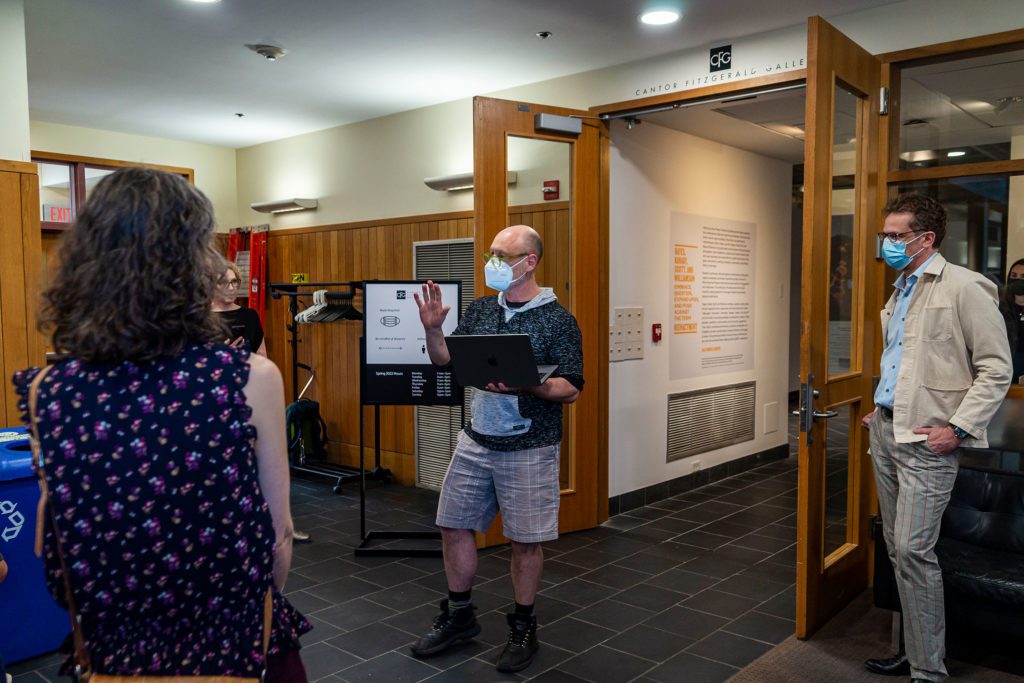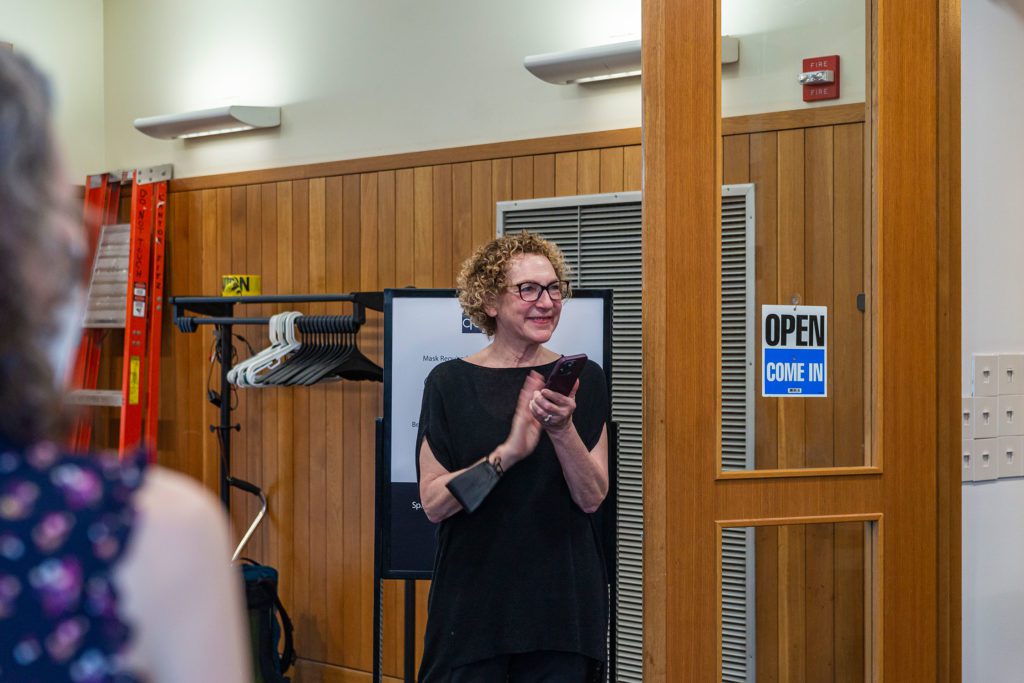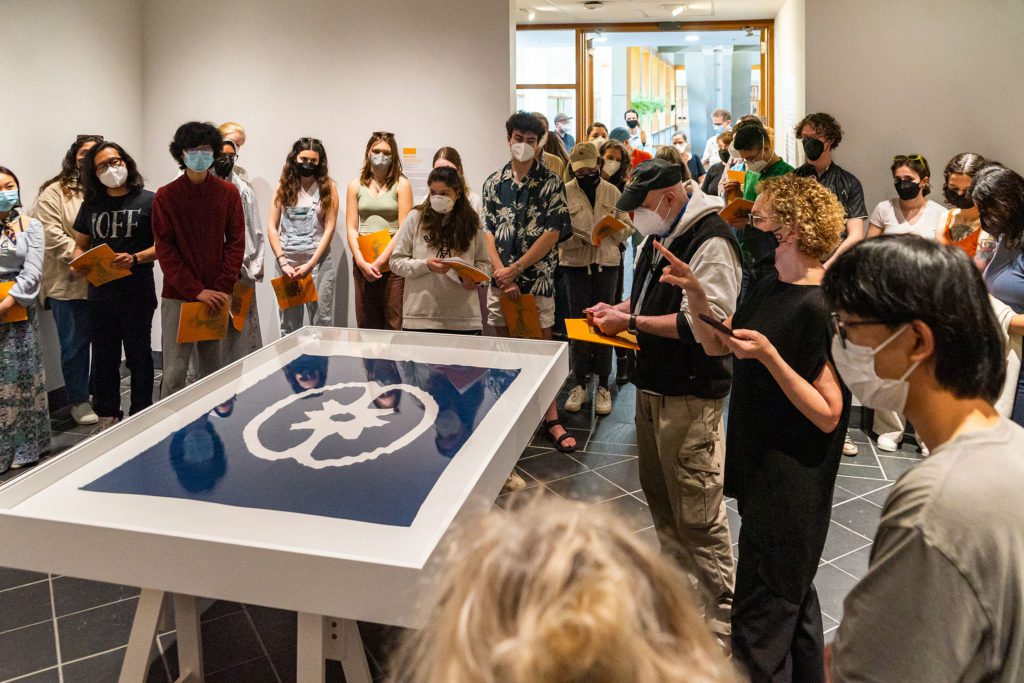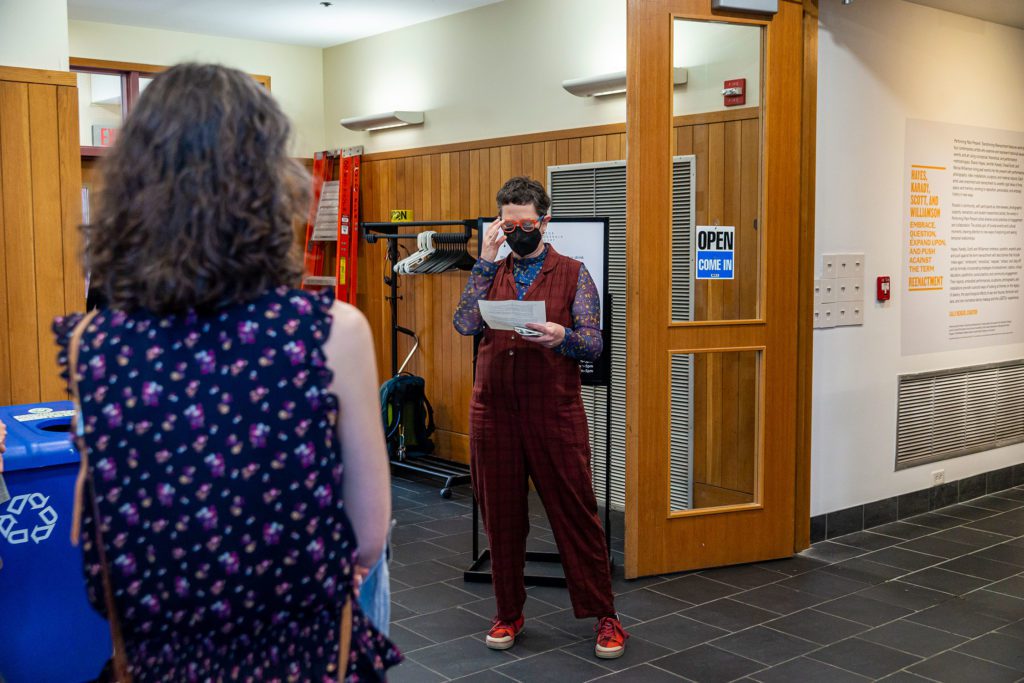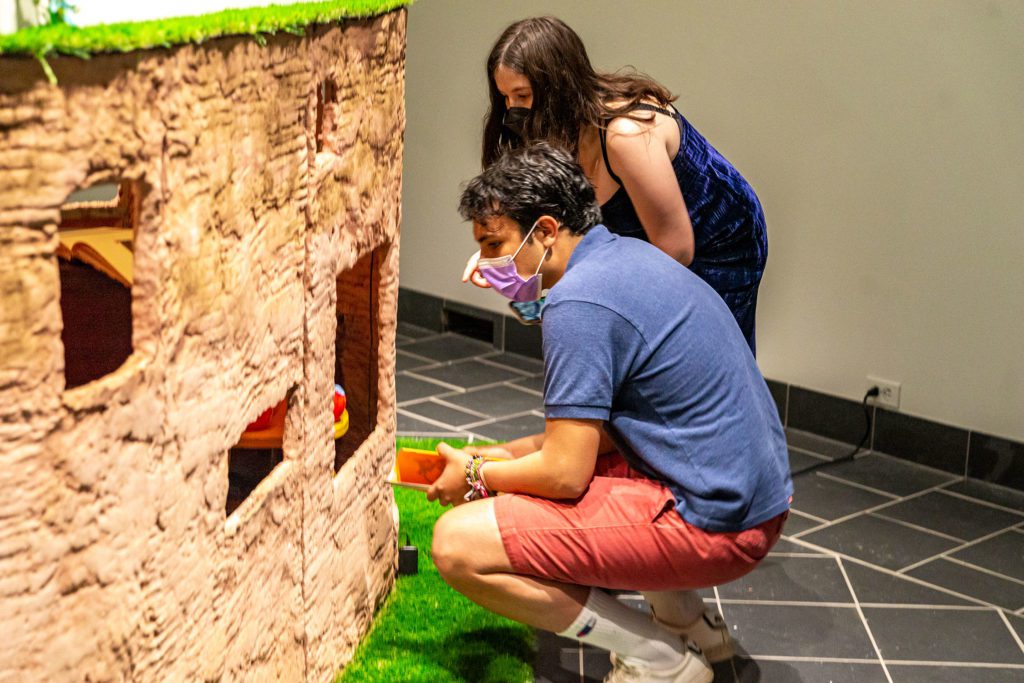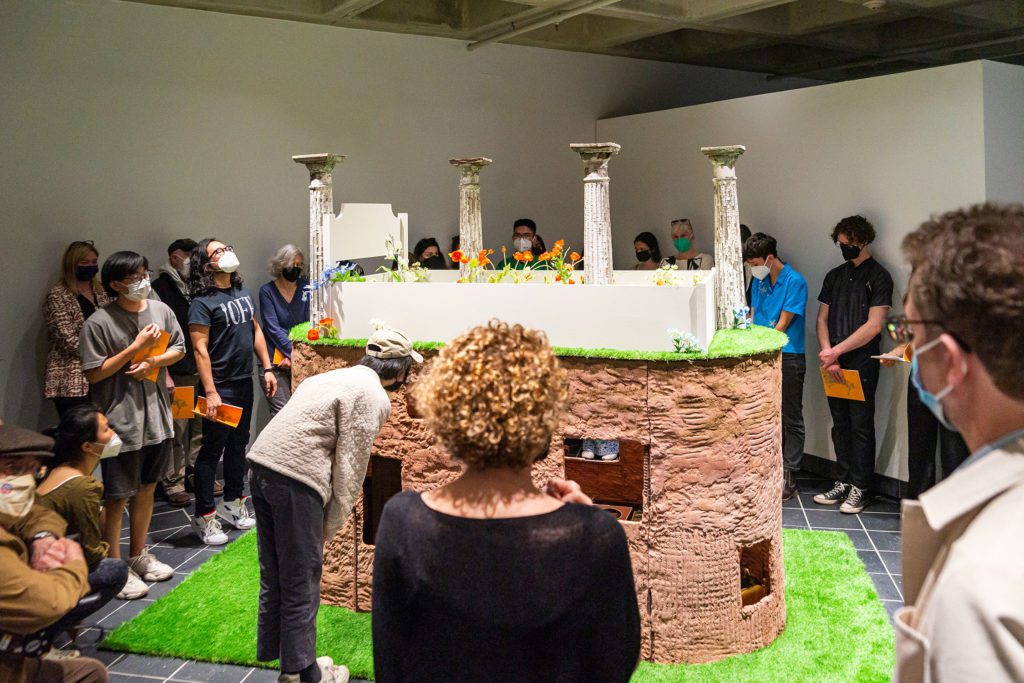Studying the past can help us understand the future. Performing Past-Present: Transforming Reenactment focuses on the historical significance of past events and contextualizes them in the present. The exhibition, which opened in the Cantor Fitzgerald Gallery on March 18, features work by four contemporary artists: Sharon Hayes, Jennifer Karady, Dread Scott, and Marisa Williamson. Their work reenacts and reinterprets the historically rich themes of slavery, war, feminism, and queerness through a variety of mediums, including performance, photography, video, sculpture, and material objects. The exhibition will be on view until April 23.
The first installation in the exhibition is by artist Dread Scott, whose name is inspired by the famous Dred Scott, an enslaved man whose court case suing for his freedom went all the way to the Supreme Court in 1857. Dread Scott’s installation, Slave Rebellion Reenactment, features two large-scale photographs from a two-day communal reenactment project he organized of the German Coast Uprising of 1811, the largest slave rebellion in United States’ history. Over 350 people participated in a reenactment of the rebellion in the Territory of Orleans—now Louisiana—area. Dressed in 19th-century costumes, carrying weapons, and riding horseback, they marched along the Mississippi River, the site of the historical revolt, and reflected on its role in the ongoing fight for abolition. In the middle of the photographs is a navy-blue-and-white “Army of the Enslaved” flag.
Assistant Professor of Visual Studies John Muse, who helped bring Scott’s work to this exhibition, attended both days of the reenactment. He wrote about his experience, as well as the stakes of Scott’s work and the qualities of reenactment, in the exhibition’s accompanying physical catalog booklet. “Attuned to the reenactors and their movements, the technical envelope was both integral to the reenactment and a means to its capture, transmission, and archiving,” he writes. “Thus, the reenactment wasn’t only to be documented from without, nor was it a profilmic event whose reality dissolved as it became cinema…Rather, Scott and his collaborators, in seeking to leave a trace, model just action, and intervene in the media ecologies of slavery, inflated this envelope. They employed reenactment and cinematic techniques together as a hybrid artistic medium, leveraging its force and contributing to its art history.”
The next installation is a film by artist Sharon Hayes. Hayes’ work focuses on the intersections of history, speech, gender, sexuality, and politics. In her film, Ricerche: One (2019), she interviews a group of 35 students at Mount Holyoke College on a range of topics such as patriarchy, feminism, religion, sexuality, and attending a women’s college. In another part of the film, she also interviews children and young adults of LGBTQ+ families, asking them how they believe babies are born. The films in the exhibition are played on screens that are back to back. Headphones are provided for attendees. The audio alternates between the two different interview segments, inviting attendees to watch both in tandem.
Marisa Williamson’s installation Seedbed (2022) is a multimedia installation that explores themes of history, feminism, and race. The project is a monument to Sally Hemings, a woman who was enslaved and mother to six of Thomas Jefferson’s children. Seedbed consists of a plinth made of air-dried clay that supports a bed of plants. Within the plinth are a collection of objects gathered by students in Sally Berger’s Fall 2020 course “Reframed: Enactment and Reenactment in Popular Culture, Digital Media, and Contemporary Art,” which Williamson helped teach as an artist-in-residence. As part of the class, students researched materials from Haverford’s Libraries Quaker & Special Collections to create new artifacts related to abolition and inspired by Seedbed. More information about the students’ research can be found in Overheard: Voices on the Underground Railroad, a satellite exhibition curated by Berger and her students. This exhibition is on display at the Lutnick Library Entrance Gallery until April 23.
“Having taken Sally Berger’s reenactment class over Zoom, it was incredible to experience the works in the gallery space more than a year later,” said Margot de Abreu ‘24. “The exhibit presented a shift from the virtual to the physical that allowed me to revisit concepts I’d become familiar with in a completely different mode, which led to new insight and appreciation for the works and the class.”
The final installation features photography by artist Jennifer Karady. Titled Soldiers’ Stories From Iraq and Afghanistan (2006-), it highlights the physical, emotional, and psychological difficulties for soldiers as they return home and reacclimate themselves to society while still dealing with the trauma. Karady works with each soldier individually to portray their personal experiences through reenactment. The three portraits in the Cantor Fitzgerald Gallery are part of a series that includes 21 portraits to date.
Another satellite exhibition, The Karady Prompt: An Exercise in Reenactment, features work from both students and faculty inspired by Jennifer Karady’s portraits. As part of a Tuttle Creative Residency, Karady gave students and faculty a photography prompt to reenact a moment in their lives that shaped their identity using gesture, performance, camera angle, framing, location, light, props, and costume. Participants of all photography experience levels were invited to participate. Students were allowed to retake the photograph after peer critique, while faculty members were challenged to get it right the first time. This exhibition is on view on the VCAM Display Wall until April 10.
“What I most liked about the Karady prompt was the challenge to not only portray a moment but to distill the various layers of meaning and importance of a memory into a single image,” said de Abreu ’24, whose work is featured in the satellite exhibition. “I enjoyed the process of deciding how to condense a specific and personal experience in a way that could be legible by someone else.”
On Wed., April 6, at 4:30 p.m, the community is invited to join a roundtable discussion with artists Sharon Hayes, Jennifer Karady, Dread Scott, and Marisa Williamson and curator Sally Berger in the VCAM 001-Screening Room. On Tues., April 19, at 4:30 p.m., Hayes and Williams will be hosting a screening of Hayes’ film Ricerche: three, as well as two films—The Fire (“Wild is the Wind”) (2017) and What Would Sally Do? (2013)—by Williamson, which will also take place in the VCAM 001-Screening Room.
You can find more information about Performing Past-Present: Transforming Reenactment at exhibits.haverford.edu/performingpastpresent/.

